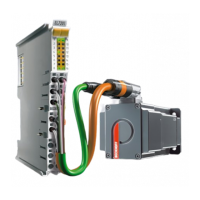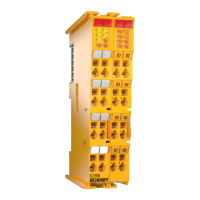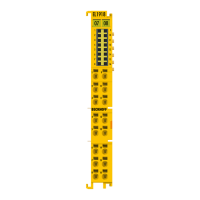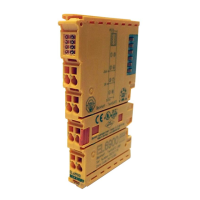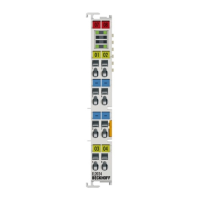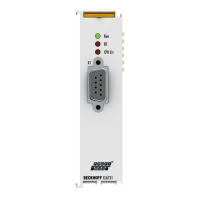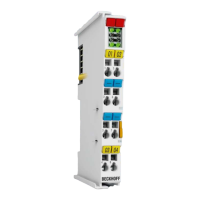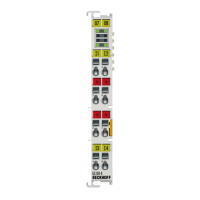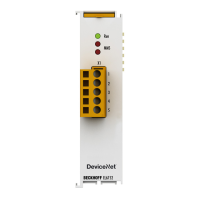Commissioning
EL70x1 155Version: 4.4
If calibration by hardware is not possible due to the circumstances of the application, the user can also set
the Calibrated bit manually or automatically. The manual setting or deletion takes place with the commands
SET_CALIBRATION and CLEAR_CALIBRATION.
It is simpler, however, if the standard start types (Index 0x8021:01) are set to SET_CALIBRATION_AUTO.
The Calibrated bit will now be set automatically by the first rising edge on Enable. The command is
conceived only for this purpose; therefore, it does not make sense to use it via the synchronous data
exchange.
5.6.7 Modulo - general description
MODULO
The modulo position of the axis is a piece of additional information about the absolute axis position. Modulo
positioning represents the required target position in a different way. Contrary to the standard types of
positioning, the modulo positioning has several pitfalls, since the desired target position can be interpreted
differently.
The modulo positioning refers in principle to the Modulo factor (Index 0x8020:0E), which can be set in the
CoE. In the following examples, a rotary axis with a "Modulo factor" equivalent to 360 degrees is assumed.
The Modulo tolerance window (Index 0x8020:0F) defines a position window around the current modulo
target position of the axis. The window width is twice the specified value (set position ± tolerance value). A
detailed description of the tolerance window is provided below.
The positioning of an axis is always referenced to its current actual position. The actual position of an axis is
normally the position moved to with the last travel command. Under certain circumstances (incorrect
positioning due to the axis stalling, or a very coarse resolution of the connected encoder), however, a
position not expected by the user may arise. If this possibility is not considered, subsequent positioning may
lead to unexpected behavior.
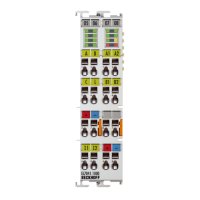
